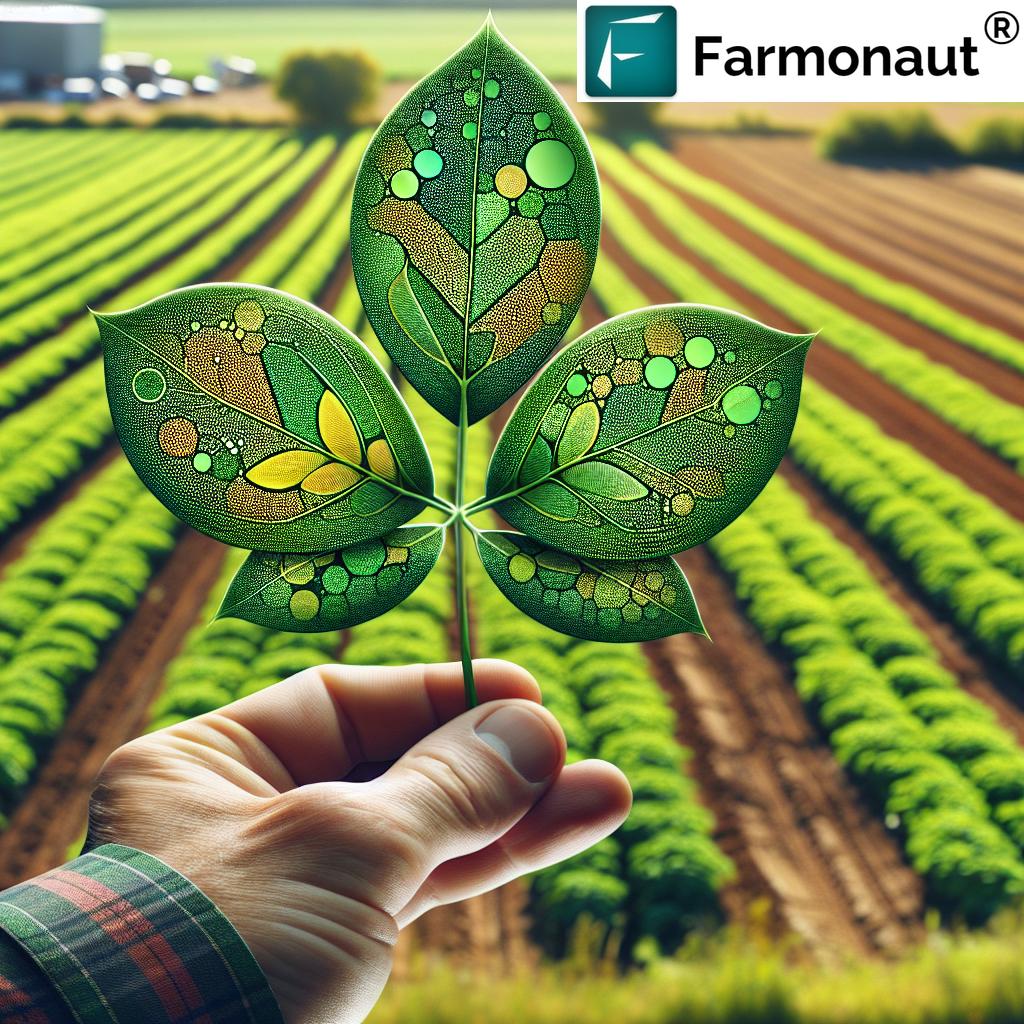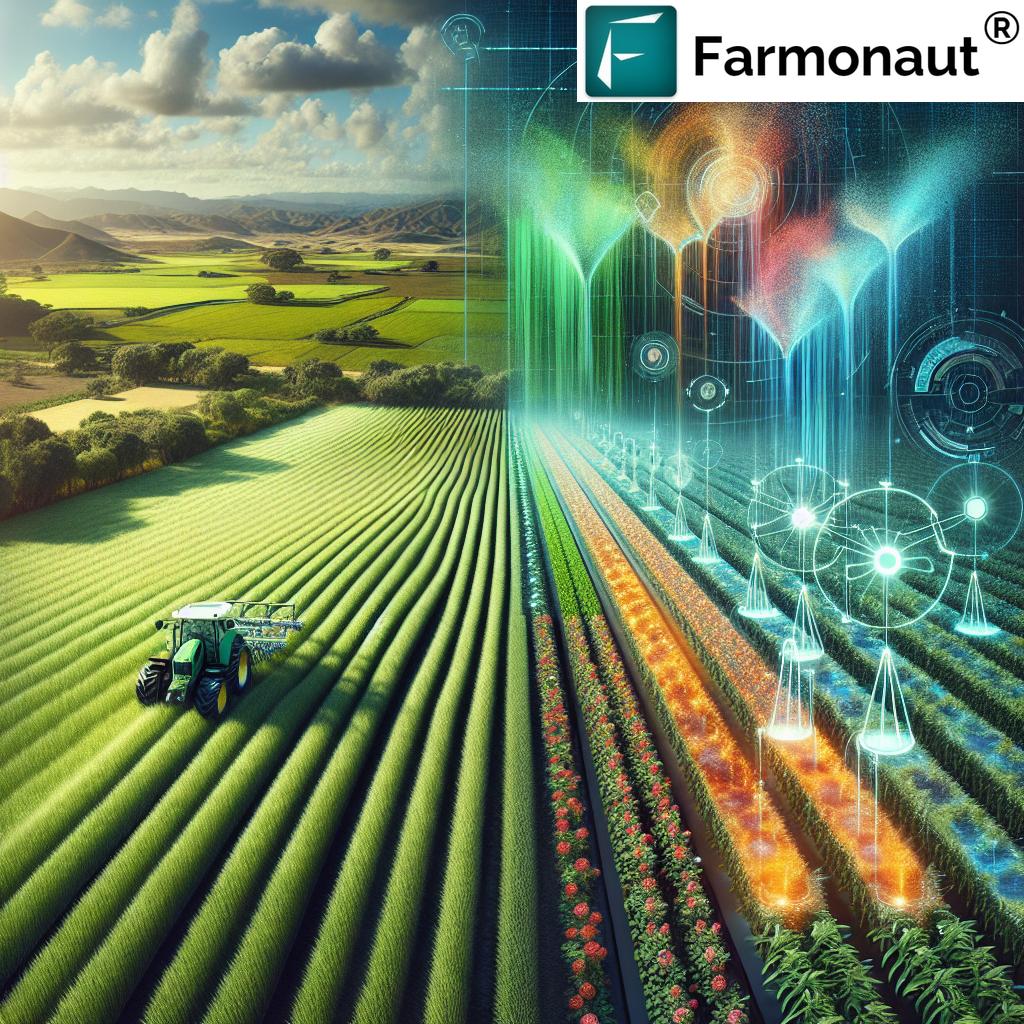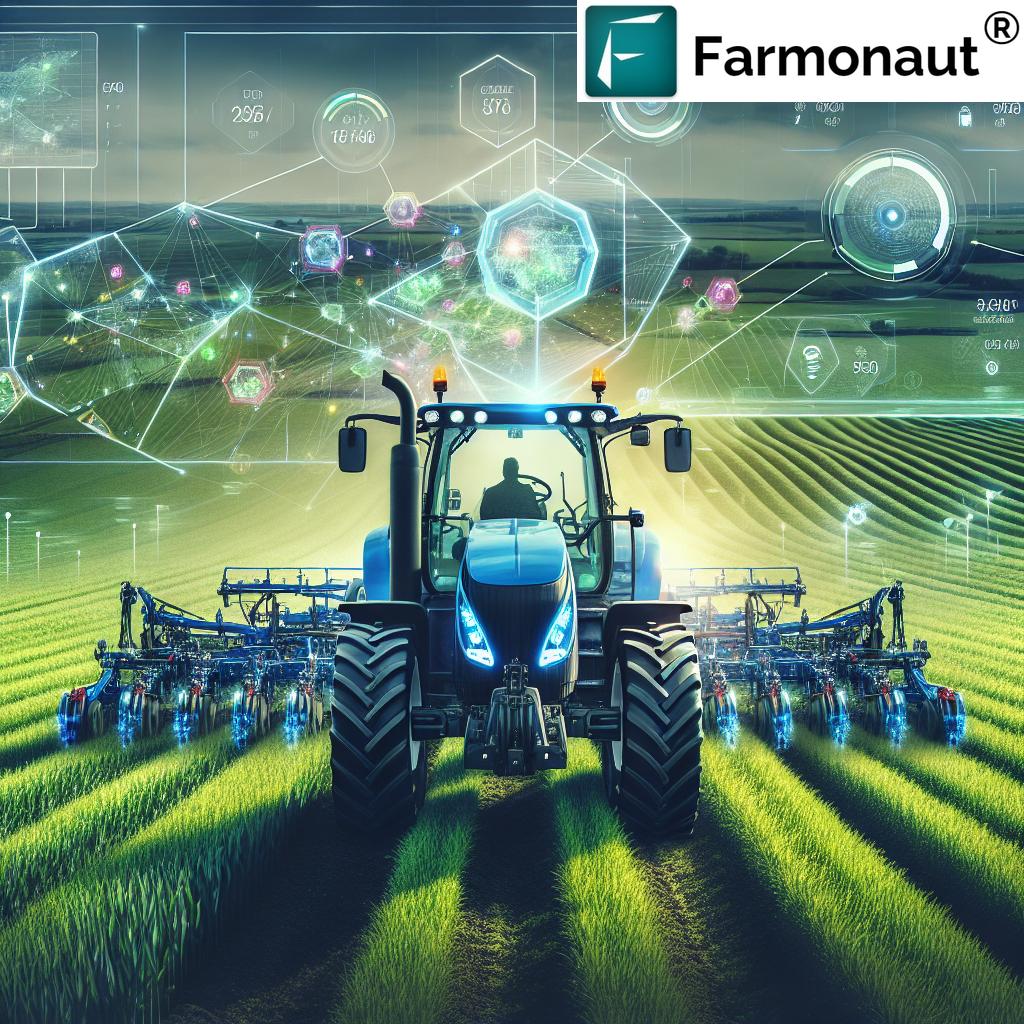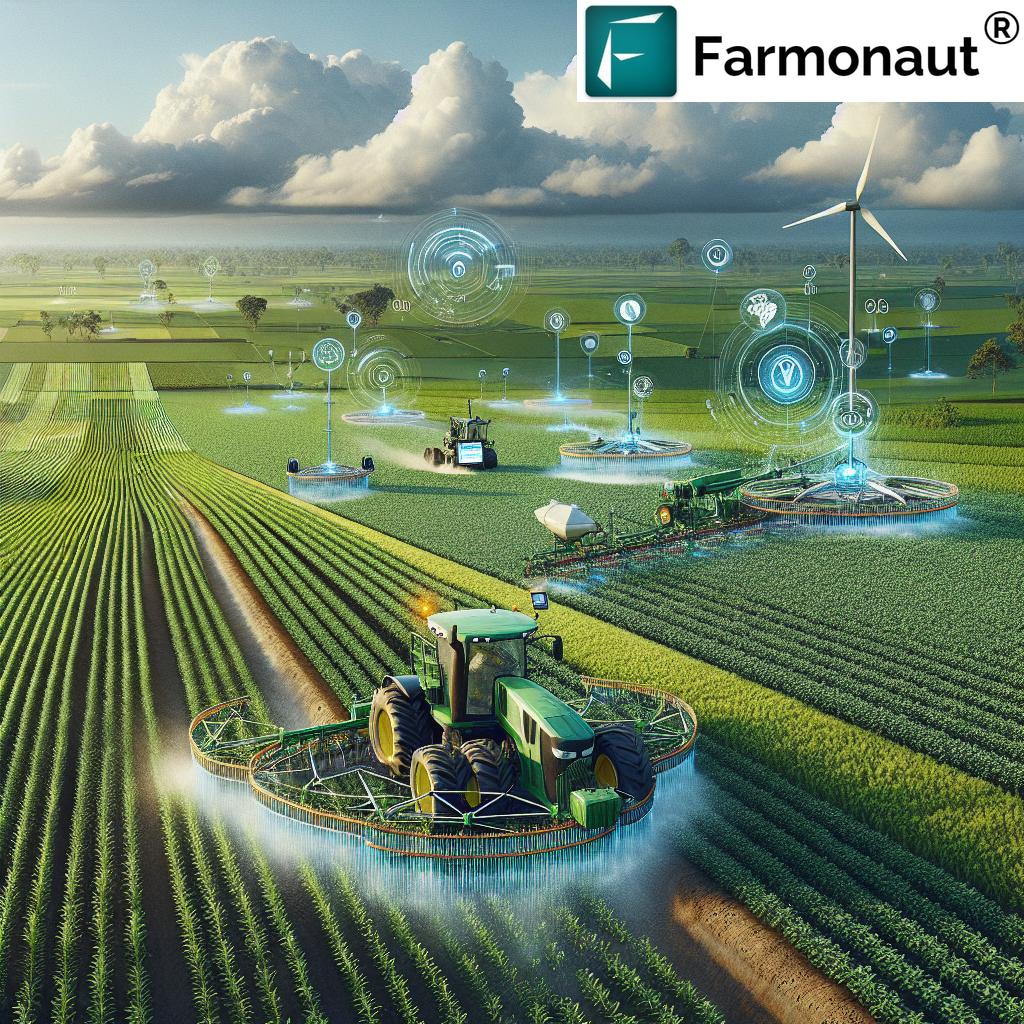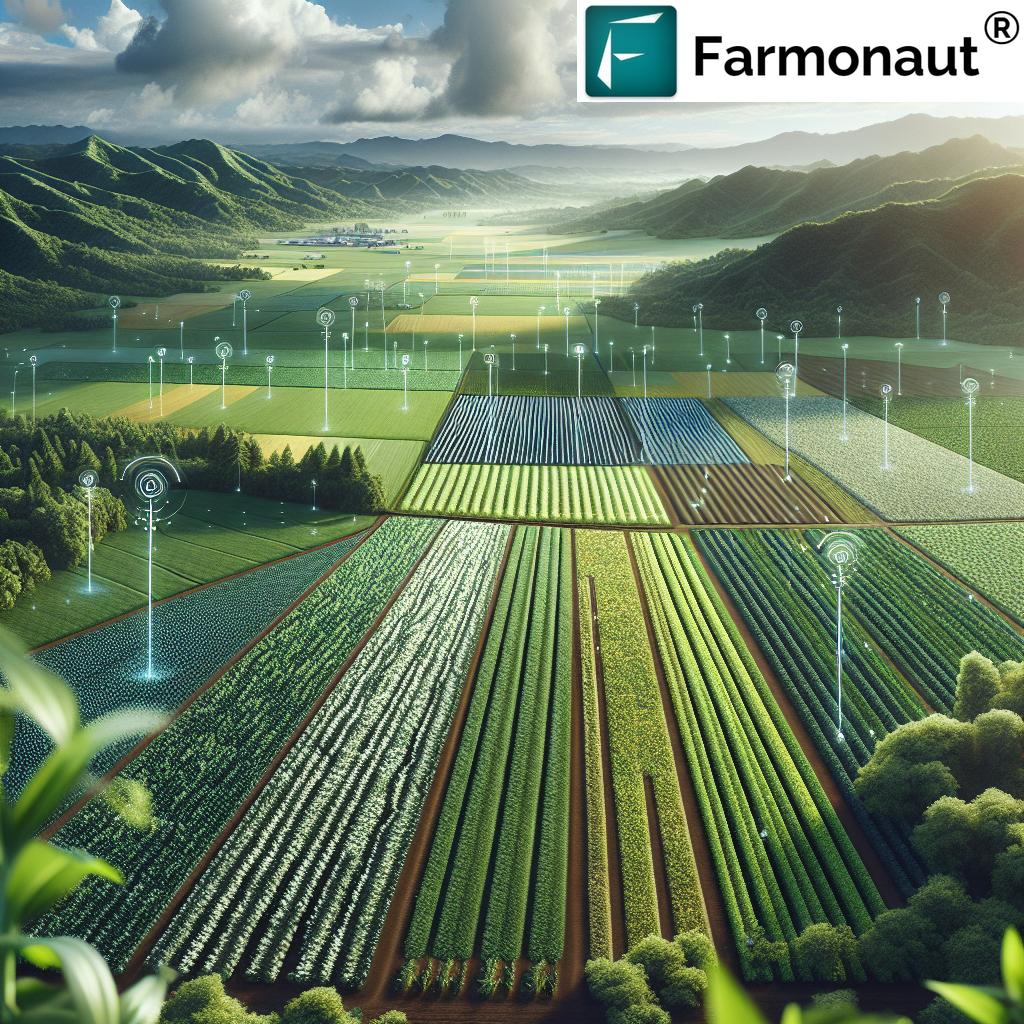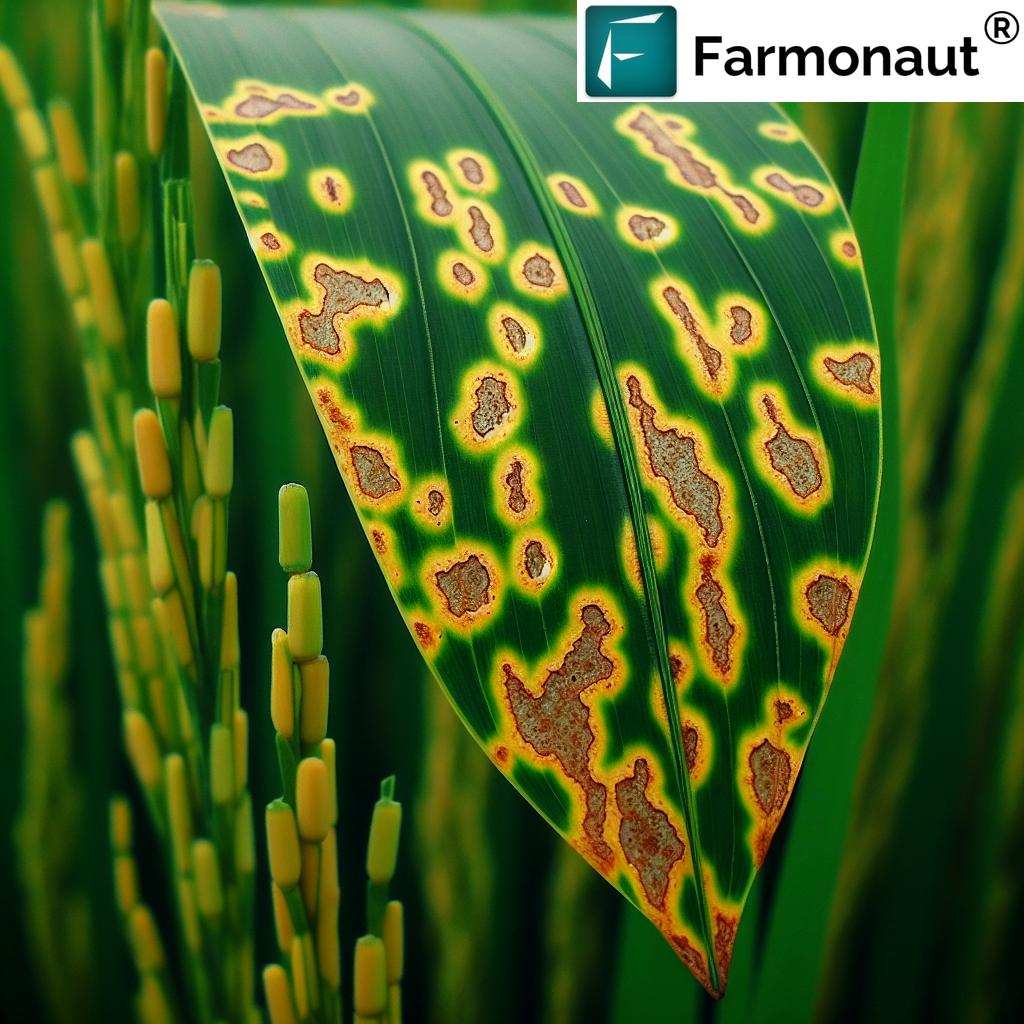- Introduction: Farming Technologies Redefining Modern Agriculture
- Trivia #1
- 1. Precision Agriculture: Data-Driven Decisions for Doubling Yields
- 2. Drones and Robotics: The Smart Revolution in Fields
- 3. Controlled-Environment Agriculture (CEA): Cultivating Beyond Limits
- 4. Vertical Farming Techniques: Maximizing Space, Multiplying Output
- 5. Agroforestry Benefits: Synergizing Forestry and Farming
- 6. Controlled Traffic Farming (CTF): Protecting Soil for Healthy Growth
- 7. AI & Data Analytics in Agriculture: Insightful Innovations for Tomorrow
- Comparison Table: Technologies and Their Impact on Yields
- Farmonaut’s Role in Modern Agriculture
- Additional Innovations Enhancing Agriculture
- FAQ: Modern Agriculture & Smart Farming
- Conclusion: Embracing the Future of Farming
Farming Technologies: 7 Shocking Ways to Double Yields
“Precision agriculture can increase crop yields by up to 70% using satellite imagery and data analytics.”
Agriculture is undergoing a radical transformation. The combination of cutting-edge farming technologies, precision agriculture, and sustainable agriculture practices is reshaping how we manage our fields and forests. Today, we have access to powerful tools—satellite imagery, AI, sensors, drones, and advanced software—that enable us to monitor, analyze, and optimize every aspect of crop and livestock management.
These advancements are not just buzzwords. They are genuinely revolutionizing how farmers and agribusinesses increase yields, optimize resource use, control input costs, and handle environmental challenges. As we explore seven shocking ways these systems can double your yields, we’ll uncover actionable techniques and showcase the role of innovators like Farmonaut in making precision agriculture accessible to all.
1. Precision Agriculture: Data-Driven Decisions for Doubling Yields
Precision agriculture is at the core of modern farming technologies. By leveraging satellite imagery, GPS-guided tractors, IoT sensors, and real-time data analytics, we can pinpoint the precise needs of our crops on an area-by-area basis. This approach targets resource application—such as irrigation, fertilization, and pesticide use—where it’s needed most.
- GPS-based field mapping breaks down fields into microzones and customizes management.
- Multispectral sensors installed via satellites or drones give real-time crop health data.
- IoT soil sensors continuously monitor soil moisture, nutrient status, and weather conditions.
By analyzing this information, we can apply fertilizers and pesticides efficiently, reduce waste, and boost yield potential—sometimes by 30-70%. John Deere’s autonomous tractors exemplify this, using intelligent software to maximize crop treatment and minimize human error (source).
For everyday users, platforms such as Farmonaut bring precision agriculture within reach. Farmonaut utilizes satellite-based crop health monitoring and AI-based advisories to help farmers make real-time, data-driven decisions—leading to higher yields, cost reduction, and enhanced sustainability.
Discover more in-depth capabilities for farm management, resource management, and traceability with Farmonaut’s API. Enhance your own tools—see full developer documentation at API Docs.
2. Drones and Robotics: The Smart Revolution in Fields
Agricultural drones and robotics are revolutionizing the way we monitor, plant, manage, and harvest our crops. These technologies provide unparalleled precision, efficiency, and labor savings on a scale that was unimaginable just a decade ago.
Aerial Surveillance and Crop Monitoring
Drones equipped with multispectral and RGB sensors survey fields daily or weekly, delivering high-resolution images of crop health, disease outbreaks, pest hotspots, and water stress. This enables timely, targeted interventions—whether it’s adjusting irrigation, applying fertilizers, or implementing pest control.
- Quickly cover vast fields and detect small-scale problems before they escalate
- Provide real-time data for AI-based analytics
- Reduce labor and input costs by focusing efforts where needed most
Robotic Planting, Weeding, and Harvesting
Robotics now automate repetitive and labor-intensive tasks such as planting, selective weeding, and even fruit/vegetable picking. Autonomous machines work around the clock with impressive accuracy, improving efficiency and reducing waste. In high-wage countries and large-scale farms, robots cut labor costs and increase productivity exponentially.
These innovations are complemented by platforms like Farmonaut’s advisory systems, which use satellite and AI-tech to deliver actionable guidance. With the integrated use of drones, sensors, and analytics, farmers can track, respond, and optimize every phase of growth.
3. Controlled-Environment Agriculture (CEA): Cultivating Beyond Limits
Controlled-environment agriculture (CEA) allows us to transcend the limitations of weather, seasonal variability, and increasingly unpredictable climate conditions. By creating tightly managed, often indoor, growing spaces—using greenhouses, hydroponics, aeroponics, or aquaponics—we can optimize every input to boost production and sustainability.
- Higher yields per square foot than traditional open-field farming
- Reduced water and fertilizer usage (hydroponics uses up to 90% less water)
- Minimal exposure to pests, allowing for controlled pesticide application and improved crop health
- Year-round growth independent of external climate
CEA also sets the stage for advanced monitoring—from IoT sensors tracking humidity and nutrient levels, to fully automated lighting and irrigation. These systems dramatically improve resource efficiency and crop yields. Learn more about CEA methods here.
“Smart irrigation systems reduce water usage by 30-50% while maintaining or improving crop productivity.”
We recommend digital farm management solutions such as Farmonaut Agro-Admin App for overseeing multi-location greenhouse and CEA farms, tracking every parameter for consistent, high-yield production.
4. Vertical Farming Techniques: Maximizing Space, Multiplying Output
Vertical farming techniques—a dynamic extension of CEA—redefine how we maximize limited land. By stacking crops in vertical columns under controlled indoor conditions, we can achieve huge yields per square meter, especially in urban settings where arable land is scarce.
- Efficient use of urban spaces and unused buildings
- Lower food miles and carbon emissions linked to transportation
- Precise resource management—water, nutrients, and energy are meticulously optimized
- Potential to grow foods locally in extreme or hostile environments
Challenges relate primarily to energy consumption for lighting and climate control, but advances in renewable energy are steadily improving sustainability. For more info, visit Wikipedia: Vertical Farming.
5. Agroforestry Benefits: Synergizing Forestry and Farming
Agroforestry is a powerful, sustainable approach that integrates trees, shrubs, and perennial plants into crop and livestock systems. This technique simultaneously boosts biodiversity, strengthens soil health, and minimizes environmental impact.
- Enhances soil fertility by fixing nitrogen and adding organic matter
- Reduces wind and water erosion (protective shelterbelts)
- Creates additional revenue through timber, nuts, and fruits
- Promotes carbon sequestration—a key tool in climate change mitigation
- Lowers input costs and encourages sustainable cycles
Governments and NGOs actively promote agroforestry benefits for their role in resource optimization and environmental sustainability. Explore more at Wikipedia: Agroforestry.
Looking for tools to monitor agroforestry projects and their carbon outcomes? Farmonaut’s Carbon Footprinting solution enables agribusinesses and foresters to measure carbon impact and take meaningful steps towards climate goals.
6. Controlled Traffic Farming (CTF): Protecting Soil for Healthy Growth
Controlled Traffic Farming (CTF) is a practice that confines all machinery movement to permanent, narrow lanes on the field. This sharply reduces soil compaction, improves water infiltration and root development, and allows crops to tap into deeper nutrients.
- Enhances soil structure and health over time
- Enables better water and nutrient uptake
- Boosts yields typically by 10-25%
- Facilitates easy automation of field operations
CTF optimizes every pass of the tractor or harvester, integrates well with precision agriculture and autonomous vehicles, and contributes significantly to long-term sustainability. Learn more at Wikipedia: CTF.
For digital guidance on field operations and resource optimization, digital fleet management solutions like Farmonaut Fleet Management help track machinery usage, plan routes, and manage costs.
7. AI & Data Analytics in Agriculture: Insightful Innovations for Tomorrow
Perhaps the most transformative development in the last decade is the rise of data analytics in agriculture and artificial intelligence. These technologies analyze real-time and historical data from sensors, satellites, and field operations to deliver predictive models—helping us forecast yields, anticipate pest outbreaks, and optimize every step of the planting-harvesting cycle.
- Yield prediction for precise harvest planning and market strategies
- Pest and disease alerts based on weather and crop conditions
- Scenario modeling for irrigation, fertilization, or planting density
When integrated with platforms such as Farmonaut Agro-Admin App, these digital tools provide enterprise-grade insights and centralized farm management for large-scale or multi-site operations.
Blockchain technology is also becoming vital in securing traceability. By using blockchain for product traceability in agriculture, farms and businesses ensure supply chain trust and transparency, while consumers gain confidence in the food they buy.
Comparison Table of Seven Farming Technologies and Their Impact on Yields
| Technology/Practice | Description | Estimated Increase in Yield (%) | Estimated Cost Reduction (%) | Key Benefits | Example of Use |
|---|---|---|---|---|---|
| Precision Agriculture | Data-driven management of field variability, satellite crop monitoring, and precise application of resources | 30–70% | 15–40% | Minimizes resource waste, increases yields, reduces environmental impact | Farmonaut’s satellite-based advisory to optimize irrigation and fertilizer |
| Drones & Robotics | Aerial crop monitoring, spraying, and field automation robots for planting, weeding, and harvesting | 20–40% | 10–35% | Reduces labor costs, improves precision, enables timely interventions | Drone spraying of fertilizers on high-value crops |
| Controlled-Environment Agriculture (CEA) | Greenhouses and indoor farms using hydroponics, aeroponics, or aquaponics | 50–120% | 20–60% | Year-round production, input efficiency, minimizes land usage | Greenhouse lettuce produced hydroponically in arid zones |
| Vertical Farming Techniques | High-density, vertical stacks with full climate control and artificial lighting | 70–250% | Varies | Maximizes output per area, enables urban farming | Leafy greens in urban warehouse farms |
| Agroforestry | Integrates trees/shrubs in cropland and pasture systems | 15–50% | 5–30% | Increases biodiversity, improves soil, provides new income streams | Timber intercropping in coffee or cocoa plantations |
| Controlled Traffic Farming (CTF) | Dedicate specific tracks for all machinery to minimize soil compaction | 10–25% | 8–20% | Protects soil health, increases root growth, easy automation | Machinery guidance on cereals and oilseed fields |
| AI-driven Analytics | Predictive modeling and advisory via machine learning and big data | 20–50% | 10–25% | Optimizes decisions, anticipates challenges, boosts profits | Farmonaut’s Jeevn AI personalized advisories |
Farmonaut’s Role in Modern Agriculture
Farmonaut is a trailblazing force within the agritech domain, making precision agriculture and farm management software truly accessible worldwide. Our mission is to empower every farmer—large or small—with real-time insights to drive better yields, lower costs, and enhance sustainability.
Farmonaut’s Key Offerings:
- Satellite-based crop health monitoring: Evaluate NDVI, soil moisture, and more for evidence-based resource management of every field section.
- Jeevn AI farm advisory: Receive crop-specific recommendations, weather forecasts, and expert management strategies based on real-time satellite analytics.
- Blockchain-based product traceability: Secure your produce traceability, increase consumer trust, and comply with food safety standards via Farmonaut’s system. Learn more about our traceability product for agri supply chains.
- Fleet and resource management: Optimize machinery routes, manage assets, and lower operational costs using fleet management solutions.
- Carbon footprinting: Track emissions for farms and forestry projects via carbon monitoring tools.
- Affordable and scalable: Subscription pricing fits all—from solo farmers to vast cooperatives and government programs, with API access for developers and enterprises to build innovative solutions.
We serve individual farmers, agribusinesses, governments, NGOs, and financial institutions who prioritize sustainability, transparency, and productivity.
With Farmonaut, you also unlock access to digital crop loan and insurance verification, helping streamline financial access and reduce fraud.
Additional Innovations Enhancing Modern Agriculture
Smart Irrigation Systems
Smart irrigation systems utilize sensors, weather forecasts, and AI-driven scheduling to deliver exactly the right amount of water per plant, per day. These technologies can reduce water consumption by one-third to one-half, all while maintaining or improving crop health.
- Integrates IoT sensors and data analytics for maximum efficiency
- Reduces environmental impact and supports sustainability
- Optimizes energy consumption and input costs
Platforms like Farmonaut’s crop health monitoring solutions can be integrated with smart irrigation controls, providing seamless satellite-driven recommendations for every season.
Farm Management Software & Integration
Farm management software brings together all our digital tools, from inventory and finance tracking to field operations and yield projections. Cloud-based platforms support seamless collaboration and enable informed decision-making—whether you are running a small organic farm or a national agri-enterprise.
- Data-driven crop planning and monitoring
- Resource allocation and task management
- Performance analysis for continuous improvement
Get started with comprehensive digital farm management using Farmonaut Agro-Admin App.
Sustainable Practices & Renewable Energy
Adopting sustainable agriculture means not just smarter technique, but also better energy choices and environmental awareness:
- On-farm solar, wind, and renewable technologies reduce grid energy use
- Carbon monitoring (see Farmonaut Carbon Footprinting) helps us track and offset emissions
- Recycling, composting, and regenerative soil practices bolster long-term fertility and resilience
Learn more about advanced traceability, sustainability, or automation for specialized crops via Farmonaut’s suite at Farm Product Traceability.
FAQ: Modern Agriculture & Smart Farming
What is precision agriculture, and how does it benefit farmers?
Precision agriculture leverages technology—such as satellite imagery, GPS, and data analytics—to monitor field variability and manage resources at a granular level. The benefits include increased crop yields, reduced waste, optimized use of water and fertilizers, and lower environmental impact.
How do agricultural drones and robotics improve farm operations?
Agricultural drones and robotics automate crucial tasks like crop surveillance, pesticide spraying, and even harvesting. They provide high-resolution data quickly, enable timely interventions, and reduce both labor costs and risks of human error.
Can vertical farming techniques be implemented anywhere?
Vertical farming techniques are especially adapted for urban and peri-urban areas with limited land. These systems allow for high output in a controlled environment, but require careful management of energy and input costs to remain sustainable.
What is the role of AI and data analytics in agriculture?
AI and data analytics in agriculture aggregate and interpret massive datasets (from weather, satellites, sensors, historical yields, etc.) to predict outcomes, optimize inputs, and provide actionable recommendations for farmers and agribusinesses.
Why should modern farms adopt cloud-based farm management software?
Cloud-based farm management software centralizes all operations, financials, and field data. It supports collaboration, analytics, and real-time decisions, enhancing both productivity and traceability across even the largest multi-site operations.
How does controlled-environment agriculture contribute to sustainability?
CEA minimizes water and fertilizer use, allows for year-round cultivation, and often reclaims non-arable land for productive use. These systems promote higher yields with a lower environmental footprint, a win-win for both food security and sustainability.
Conclusion: Embracing the Future of Farming
The agricultural revolution of our era is happening right before our eyes. By adopting farming technologies such as precision agriculture, vertical farming techniques, drones and robotics, and sustainable management, we—farmers, agronomists, and agricultural businesses—are more empowered than ever to double yields, reduce costs, and build a better future for our planet.
Farmonaut stands as a beacon of this transformation, democratizing access to satellite data, AI, and blockchain for every stakeholder in agriculture and forestry. With end-to-end solutions covering monitoring, resource management, carbon tracking, and transparent supply chains, we’re here to help you thrive, whatever your field.
Let’s harness innovation, make smarter decisions, and cultivate not just crops, but a more sustainable and resilient world.






